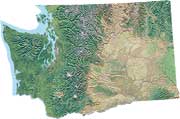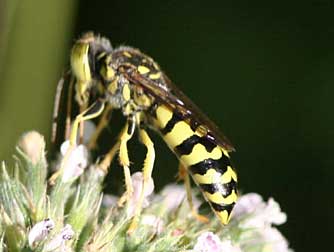
Steniolia sand wasp
Steniolia sand wasps are yellow and black like yellowjackets, but they look different in other ways and their life cycle is much different. Unlike yellowjackets, these are solitary ground wasps that dig burrows in sand to rear their young. Steniolia sand wasps specialize on catching flies, preferably bee flies (bombiliids) to provision their nest burrows as their larvae grow. The sand wasp will sting a fly to subdue it, then stuff the dead or paralyzed prey into its solitary burrow as available for its developing young to eat. Their life history differs in this way from other beneficial wasps, which accumulate larval provisions first (mass provisioning) and then seal up the nest burrow with larvae inside.
These sand wasps have long tongues, adapted to reaching nectar from a variety of flowers including green rabbitbrush, wavyleaf thistle and horse mint.
As they do with other predatory wasps, velvet ants (Mutillids) likely raid sand wasp nests to lay their eggs on mature larvae, no doubt reducing Steniolia populations to some extent. Thick-headed flies also parasitize sand wasps-- in an apparent show of brinksmanship, a female thick-headed fly will boldly intercept a fly-hunting wasp in flight, pry apart abdominal segments to lay her egg, then detach and fly away. Her egg hatches as an internal parasite developing in its host wasp, without necessarily killing it.
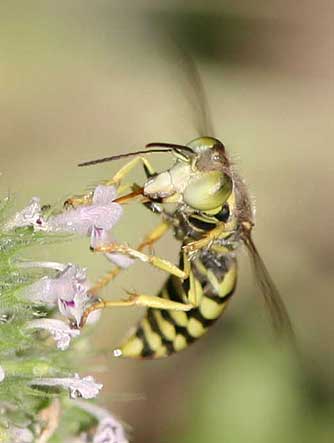
Steniolia Sand Wasp
nectaring on horse mint flower
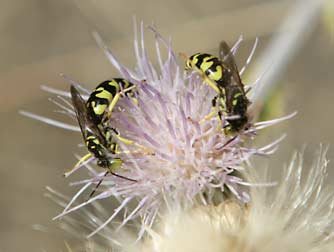
Steniolia Sand Wasps
nectaring on wavyleaf
thistle
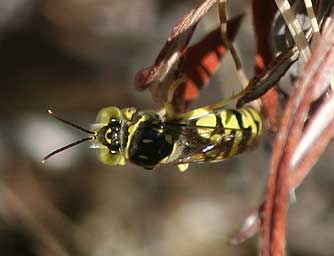
High-pitched, singing sand wasp
in parsnip-flower
buckwheat
» Other eastern Washington wasps
